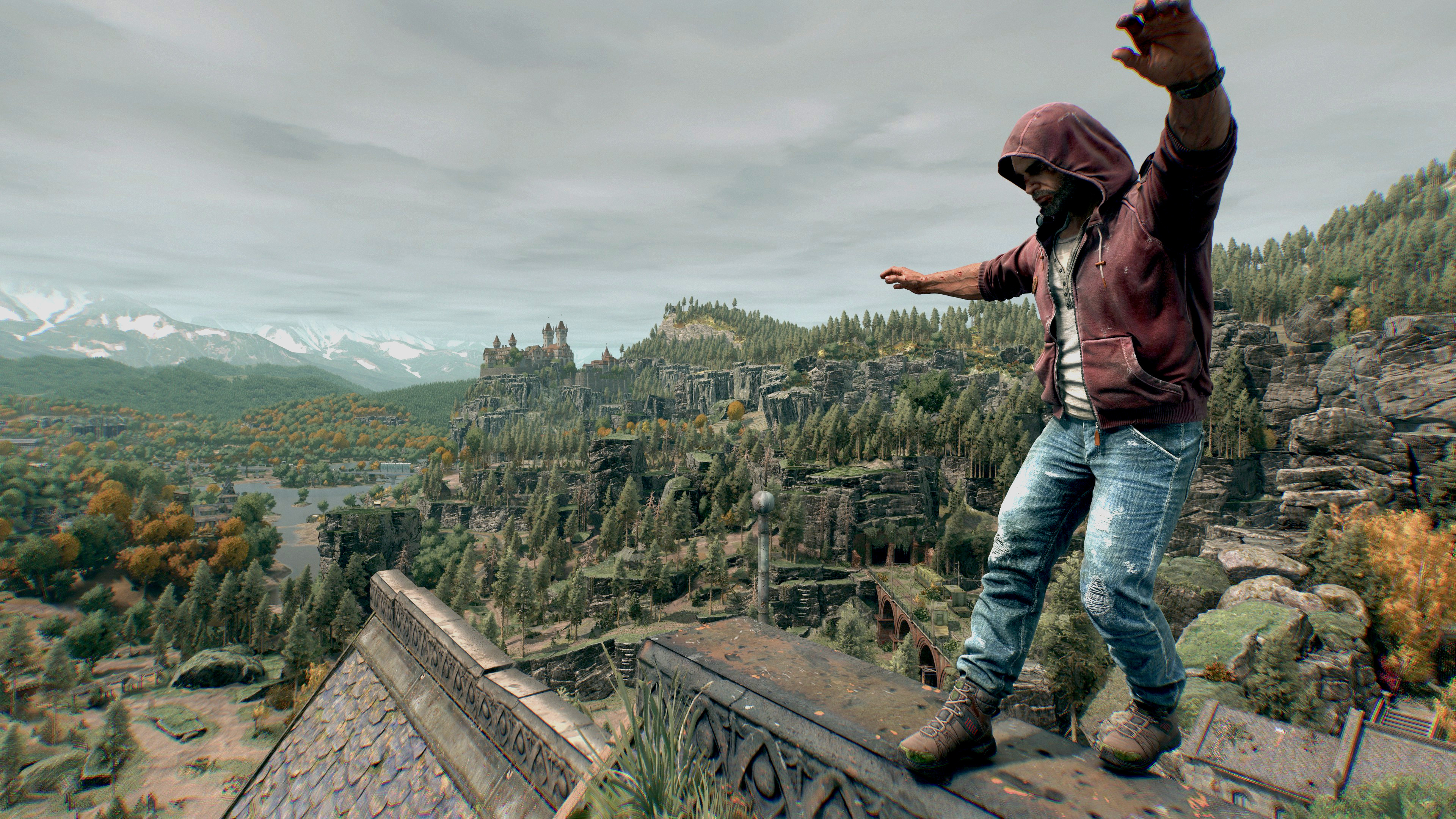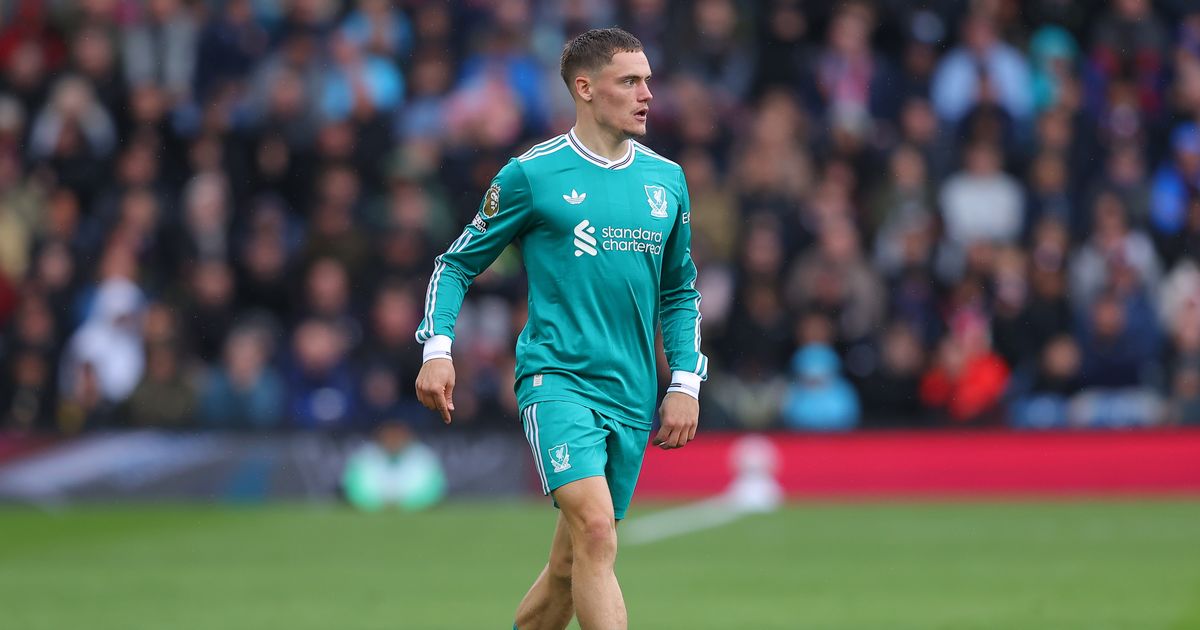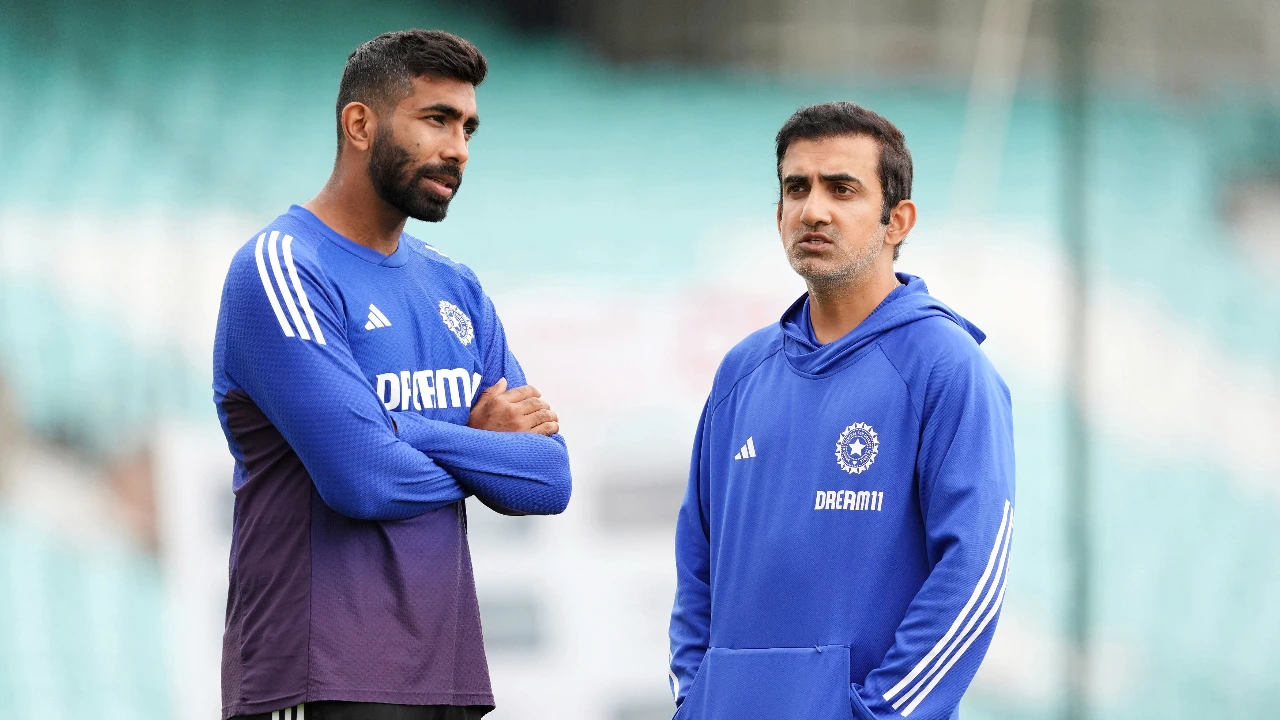Dying Light: The Beast PC performance analysis: Decent frame rates all round, nice graphics, and stutters only on low VRAM GPUs
By Nick Evanson
Copyright pcgamer

Skip to main content
Close main menu
THE GLOBAL AUTHORITY ON PC GAMES
View Profile
Search PC Gamer
PC Gaming Show
Movies & TV
Affiliate links
Meet the team
Community guidelines
About PC Gamer
PC Gamer Magazine Subscription
Why subscribe?
Subscribe to the world’s #1 PC gaming mag
Try a single issue or save on a subscription
Issues delivered straight to your door or device
From£35.99Subscribe now
Borderlands 4
Essential Hardware
Battlefield 6
Don’t miss these
Gaming Laptops
Alienware 16 Area-51 review
Best mini PCs in 2025: The compact computers I love the most
Best gaming PCs in 2025: these are the rigs and brands I recommend today
Graphics Cards
Best graphics cards in 2025: I’ve tested pretty much every AMD and Nvidia GPU of the past 20 years and these are today’s top cards
Gaming Laptops
Acer Predator Helios 18 AI gaming laptop review
Dying Light: The Beast review – A step down from zombie-stomping greatness
Gears of War: Reloaded PC performance: The updated graphics are easy work for any desktop GPU from the past six years but they’re still enough to give handhelds grief
I’ve tested Borderlands 4 on a minimum spec PC and a monster RTX 5090 rig, and it runs just as ‘Borderlands-at-launch’ as you’d expect
The PC hardware requirements for Dying Light: The Beast are heavy on the CPU side, but they’re all over the place when it comes to the GPU
Gaming Laptops
MSI Crosshair 16 HX AI (2025) review
Graphics Cards
I’ve been testing Nvidia GeForce Now’s RTX 5080 upgrade against an actual RTX 5080 and the two feel eerily close—although 4K streaming invokes the occasional wobble
Are high-end GPUs even worth buying anymore? I’m starting to have my doubts
EA wants Battlefield 6 to run great without relying on DLSS: ‘Our goal is for everything to be performant without a lot of extra stuff’
Framework Desktop PC review
Gaming Laptops
Medion Erazer Scout 15 E1 gaming laptop review
Dying Light: The Beast
Dying Light: The Beast PC performance analysis: Decent frame rates all round, nice graphics, and stutters only on low VRAM GPUs
Nick Evanson
18 September 2025
And if you do need more fps, upscaling works wonders here.
When you purchase through links on our site, we may earn an affiliate commission. Here’s how it works.
(Image credit: Techland)
Very low preset
Medium preset
High preset
Originally planned as an extension DLC for Dying Light 2: Staying Human, Dying Light: The Beast has ultimately morphed into a full game in its own right, albeit smaller in scope and far more linear than either of its predecessors. The developer, Techland, has stuck to using its internal C-Engine software package, though it’s been “heavily modified and upgraded” since its implementation in DL2.
With Techland posting some seriously heavy system requirements and Nvidia partnering once more for RTX and DLSS additions, I was concerned that Dying Light: The Beast would be joining a growing list of recent games that don’t run very well on PC. Having tested the game on a broad range of hardware, I can tell you now that it’s actually all fine, even when the performance is lower than you’d like.
This is especially true if you stick to 1080p or 1440p, and even though Dying Light: The Beast proudly wears an ‘I love upscaling’ t-shirt, you should have no problems getting a respectable frame rate on most modern gaming PCs.
Related Articles
Dying Light: The Beast review – A step down from zombie-stomping greatness
Gears of War: Reloaded PC performance: The updated graphics are easy work for any desktop GPU from the past six years but they’re still enough to give handhelds grief
I’ve tested Borderlands 4 on a minimum spec PC and a monster RTX 5090 rig, and it runs just as ‘Borderlands-at-launch’ as you’d expect
What might seem rather odd, though, is that at the time of writing, there are no ray tracing options in the settings, even though there should be. There was in the first review version of the game I tested, but due to some bugs and interdependency issues, a subsequent patch removed it all. Techland has said that the full ray tracing implementation will return in the next patch, but it’s not yet clear if that will be in time for the global release.
Despite this, Dying Light: The Beast looks nice enough, even on low quality settings, and you can also ignore some aspects of the system requirements. You categorically do not need a Core i5 13400F or Ryzen 7 5800F as a minimum CPU. However, you will need a reasonably modern GPU, and even though Techland says 6 GB of VRAM is a minimum, from my testing, it’s really 8 GB.
Test PC specs
Asus ROG Ally, 15 W mode
Acer Nitro V 15 (Gaming mode), Ryzen 7 7735HS, RTX 4050 Laptop (75 W), 16 GB DDR5-4800
Core i7 9700K (65 W), 16 GB DDR4-3200, Radeon RX 5700 XT
Ryzen 5 5600X (65 W), 16 GB DDR4-3200, Radeon RX 6750 XT
Ryzen 7 5700X3D (105 W), 32 GB DDR4-3200, GeForce RTX 5070
Core i5 13600K (125 W), 32 GB DDR5-6400, Radeon RX 7900 XT
Core Ultra 7 265K (250 W, 200S Boost), 48 GB DDR5-8000, GeForce RTX 4080 Super
CyberPowerPC/MSI, Ryzen 7 9800X3D (120 W), 32 GB DDR5-6000, GeForce RTX 5090
Monitors: Acer Nitro XV282K KV / MSI MPG 321URX
Operating System: Windows 11 24H2
Drivers: Adrenalin 25.9.1 / GeForce Game Ready 581.29
Let’s get into the benchmarks to provide all the evidence you need for all the above points. I’ve used a location very early in the game, where I could do multiple, consistent loops. Dying Light: The Beast sports a dynamic weather system and day-night cycle, which meant I had to do more runs than normal to ensure that the lighting was roughly the same each time.
Very Low quality preset
Dying Light: The Beast offers four quality presets (originally five, with the highest using ray tracing, which is the one that has been removed in the current build), though you can delve into an advanced settings panel to tweak things to your liking even further. Starting with Very Low, you can see that for a minimum quality setting, everything actually looks pretty good.
The biggest gaming news, reviews and hardware deals
Keep up to date with the most important stories and the best deals, as picked by the PC Gamer team.
Contact me with news and offers from other Future brandsReceive email from us on behalf of our trusted partners or sponsorsBy submitting your information you agree to the Terms & Conditions and Privacy Policy and are aged 16 or over.
In fact, it’s so good that there is relatively little difference in visual fidelity between any of the presets, and for most of the test PCs used, that also meant a small difference in performance between the Very Low, Low, Medium, and High presets.
My ancient Core i7 9700K test rig, with a Radeon RX 5700 XT, gets almost 60 fps at 1080p with this preset, so if you have similarly old hardware, then you’ll be pleased to see that it runs perfectly well and looks pretty good. Also, note that I haven’t used upscaling with the preset tests. By default, each preset will enable a certain level of TAAU (temporal anti-aliasing upscaling), but I’ve overridden this and just used TAAU Native in each case.
Sadly, it’s not good news for handheld PC gamers, as my Asus ROG Ally just couldn’t cope. It uses 4 GB of VRAM by default, but I’ve tested 6, 7, and 8 GB configurations on the device, and it doesn’t make any difference. Even pushing the power limit up to 30 W doesn’t bring any real relief.
Related Articles
Dying Light: The Beast review – A step down from zombie-stomping greatness
Gears of War: Reloaded PC performance: The updated graphics are easy work for any desktop GPU from the past six years but they’re still enough to give handhelds grief
I’ve tested Borderlands 4 on a minimum spec PC and a monster RTX 5090 rig, and it runs just as ‘Borderlands-at-launch’ as you’d expect
(Image credit: Techland)
The same is true of the RTX 4050 laptop I use in performance tests. While the average frame rate is acceptable enough, the 1% low figure is ruined by random, very heavy stutters. These can last up to 1 or 2 seconds in length, and having measured the VRAM usage with PIX on Windows, it’s almost certainly being caused by the game demanding more than 6 GB of memory when moving into new locations.
There is a solution to this problem (hint: it’s upscaling), but you’re better off just assuming the minimum VRAM requirement to be 8 GB, rather than six. Not that you need a huge amount of video memory, as I recorded a maximum of 9.2 GB at 4K with the High preset (8.5 GB 4K Medium, 8.2 GB 4K Low, 7.9 GB 4K Very Low). Should the ray tracing preset make a return (and I’m confident it will), then the game will use more than that, of course.
Low quality preset
Switching to the Low preset doesn’t change matters a great deal. That’s because only two graphics settings actually get altered: texture quality and shadows quality. The former switches from Medium to High, but as these are the only two options, it’s not a big change at all. The latter has five settings, matching the presets, but just as with the textures, there’s not a whole lot of difference between them all.
Techland certainly deserves praise for making the game look as good as it does on lower quality settings. Sure, when you pause it and go into photo mode, things do stand out more between the presets, but while you’re running about and beating up zombies, you honestly won’t notice.
What you will notice is the performance impact that frame resolution now has. Take the Ryzen 5 5600X test rig with a Radeon RX 6750 XT, as an example. At 1080p Very Low, it achieves an average frame rate of 78 fps. Using the High preset, it drops to 61 fps, a fall of 22%. However, sticking with the Low preset, and going from 1080p to 1440p, the performance decreases by 36%.
This is because all of the rendering techniques that Techland has employed in Dying Light: The Beast are heavily tied to frame resolution, so increasing that doesn’t just mean more pixels for the GPU to process, it also means every render texture or temporary buffer increases in size, too. Using upscaling naturally solves this problem.
Medium quality preset
There’s not really much to say here, other than the results are all very predictable, given what we’ve seen with the Very Low and Low presets. Some games tend to jump up quite noticeably when going from low to medium quality graphics settings, but not so much in Dying Light: The Beast.
That said, the Medium preset does increase everything to do with lighting, shadows, particles, and fog. And, if you look hard enough, you can just about see the difference. Where it’s most noticeable is when the sun is low, casting long shadows across the landscape and making the contact shadows of smaller objects, as well as ambient occlusion, stand out more.
Unfortunately, it also highlights just how overly aggressive the LOD scaling system is. In the above videos, where the character is running up a road, you might notice patches of grass suddenly popping into view. This happens with all of the presets, and when it’s dawn or dusk in the game, it’s very distracting.
The same is true of the lens flare and chromatic aberration effects. They’re both wildly overdone, and even if you don’t mind them normally, I suspect you’ll be gunning to disable them within a few minutes (it’s in the advanced settings panel, top right corner of the video menu, FYI).
High quality preset
Dying Light: The Beast naturally looks its best on the (currently) highest preset, though if you want to, you can make it even better. In the advanced settings panel, there’s one option called draw distance multiplier, which gets set to 100 for Very Low, Low, and Medium, and 140 for High. I tried it at the maximum value of 300 on the 9800X3D, 5090 test rig, and it barely made any impact on the performance.
The result is some very nice vistas, though how often you’ll spend staring at distant forestry when you’ve got a horde of zombies chasing you is anyone’s guess. Another aspect that the High preset improves is when the weather turns into a raging storm. On lower settings, wet surfaces shimmer a bit too much, but on High, it’s nigh on perfect.
And don’t worry if the above native performance figures are a bit too low for your liking. Dying Light: The Beast is surprisingly playable even when the frame rate is below 40 fps, which makes me think that Techland has targeted an ‘internal rate’ of 30 fps, to ensure that the gameplay is consistent across every platform the game is available for.
Upscaling performance
(Image credit: Techland)
The use of upscaling in Dying Light: The Beast has a marked effect on the frame rate. With all of the rendering being so heavily dependent on resolution, decreasing this gives GPUs a much easier time of things. That said, there is only so much it can do.
FSR Performance upscaling
Asus ROG Ally, 15 W mode, 1080p Very Low
I was hoping to try and reach 30 fps at Very Low with the ROG Ally by using upscaling, but as you can see, even FSR Performance can’t quite do it. I know it’s only a handful of fps short, but this level of upscaling just makes things too blurry and messy to be enjoyable, even on the handheld’s small screen.
With the baseline performance being so low, frame generation isn’t going to work wonders, and while the average frame rate is okay, the input latency just makes dodging zombies and timing critical jumps harder. I think with a bit more tweaking behind the scenes, Techland could make Dying Light: The Beast run well enough on a handheld, but that likely won’t happen for a while, if at all.
DLSS Quality upscaling + 2x Frame generation
Ryzen 7 7735HS, RTX 4050 laptop, 1080p Low
Where upscaling failed to save the handheld, it made a big difference with the 6 GB RTX 4050 laptop. The horrible stutters are still present with DLSS Quality, but they vanish entirely with DLSS Balanced or Performance, and the game is nicely playable with the former. However, applying frame generation takes things back a step, and this is probably a case of the 6 GB VRAM limit being a bit too borderline.
FSR Performance upscaling + 2X frame generation
Core i5 13600K, Radeon RX 7900 XT, 1440p High
The implementation of AMD’s FSR 3.1.5 (FSR 2.3.4 is also an option, weirdly enough) is very good, with few signs of the usual blurring and smearing that FSR often generates. Admittedly, some of this is masked by the game’s heavy use of motion blur, but that’s done well too, so Radeon users will be happy with what Techland’s done.
One thing to note, however, is that frame generation isn’t best used with an RDNA 2 or earlier GPU, as it induces a noticeable hit to the 1% low frame rate. You don’t get stutters or anything like that, it’s just a case that the minimum fps is generally lower when using frame gen. With an RDNA 3 or newer GPU, though, frame generation works well and produces relatively little input lag.
DLSS Quality upscaling + 2X frame generation
Ryzen 7 5700X3D, GeForce RTX 5070, 1440p High
Dying Light: The Beast supports Nvidia’s DLSS 4, including Multi Frame Generation (MFG), though it’s not clear whether it’s using the transformer model for upscaling. Just as with FSR, you get a healthy boost to the overall performance just from using upscaling, and given that it produces slightly better anti-aliasing than the native TAAU system, you really should be using it by default.
However, I have to say that I’m somewhat disappointed by Techland’s implementation of MFG. You clearly get a huge increase in the frame rate and all with practically no increase in input latency, but the 1% low fps decreases, no matter what RTX GPU you use. While I’ve not included the results in the above charts, I’ve tested the game with an RTX 3060 Ti, RTX 4070, and RTX 4080 Super—all of them are fine with upscaling, and all show the same odd frame gen results.
Other than the RTX 3060 Ti, which doesn’t support DLSS Frame Gen. However, since Dying Light: The Beast uses FSR 3.1.4, the old Ampere GPU can use that alongside DLSS upscaling, but it runs just as it does with the RX 6750 XT.
I’m confident that future patches will iron out all these issues, as Dying Light 2: Staying Human didn’t run smoothly at launch either, but it works just fine these days.
CPU utilisation
The very first benchmarks I ran with Dying Light: The Beast weren’t for getting a sense of overall performance or checking out the graphics. With the system requirements demanding a fairly potent CPU as a minimum, I wanted to see just how bad the processor load was. Using PIX on Windows, I recorded all of the thread activity generated by the game, and mapped out the CPU core usage for two systems.
As you can see, the Core i7 9700K does hit all eight cores pretty hard, but only as a maximum. With the average and minimum utilisation figures being so close, it’s clear that the CPU is actually fine for the most part. That’s because this old processor was paired with an RX 5700 XT, so the game is predominantly GPU-limited, giving the CPU an easier time of things.
But even when one switches to the Ryzen 7 9800X3D, with an RTX 5090, you can see that the bulk of the workload is being handled by two cores. As with all modern AA or AAA 3D games, Dying Light: The Beast generates a whole host of threads, but there’s only one or two that are really heavy.
The point is, if an old Core i7 9700K can run the game fast enough (just check out the FSR upscaling results for the 5700 XT to see what I mean), then pretty much any CPU within the past five years will be absolutely fine.
Final thoughts
(Image credit: Techland)
It’s a shame that the full graphics options for Dying Light: The Beast aren’t available, or at the very least, they weren’t available for my testing of the review version. If only because I like making GPUs squeal by giving them a ridiculous workload to deal with. If I can be honest, I don’t think the game really needs ray tracing.
Well, perhaps it does for water reflections, because I generally dislike screen space reflections (SSR), as it gets projections all wrong and induces glaring halos around objects that pass in front of the surface. Ray-traced reflections don’t suffer from these issues at all.
But nothing else in the game needs it, as the overall lighting and shadows are more than good as they are. I’d prefer to see higher resolution textures, as some of them are pretty rough-looking, and I’d much rather see Techland spend the time on turning down the overbearing lens flare and chromatic aberration effects than get its ray tracing pipelines to work properly.
However, given all the RTX marketing that’s already taken place, you know it will make an appearance at some point (perhaps even in time for the public release). Fortunately, the base graphics are fine—not eye-popping amazing, but certainly not poor either—and the overall performance is pretty good, especially with a touch of upscaling.
Best of all, I didn’t experience a single crash nor any major stutters, bar those on the little laptop, thanks to its low amount of VRAM. Shader compilation is handled during the game’s loading images and is blessedly brief. It all just works, meaning I can just enjoy running around, climbing up buildings, and bashing zombies in with a spade. What more can one ask for?
Nick Evanson
Hardware Writer
Nick, gaming, and computers all first met in the early 1980s. After leaving university, he became a physics and IT teacher and started writing about tech in the late 1990s. That resulted in him working with MadOnion to write the help files for 3DMark and PCMark. After a short stint working at Beyond3D.com, Nick joined Futuremark (MadOnion rebranded) full-time, as editor-in-chief for its PC gaming section, YouGamers. After the site shutdown, he became an engineering and computing lecturer for many years, but missed the writing bug. Cue four years at TechSpot.com covering everything and anything to do with tech and PCs. He freely admits to being far too obsessed with GPUs and open-world grindy RPGs, but who isn’t these days?
You must confirm your public display name before commenting
Please logout and then login again, you will then be prompted to enter your display name.
Dying Light: The Beast review – A step down from zombie-stomping greatness
Gears of War: Reloaded PC performance: The updated graphics are easy work for any desktop GPU from the past six years but they’re still enough to give handhelds grief
I’ve tested Borderlands 4 on a minimum spec PC and a monster RTX 5090 rig, and it runs just as ‘Borderlands-at-launch’ as you’d expect
The PC hardware requirements for Dying Light: The Beast are heavy on the CPU side, but they’re all over the place when it comes to the GPU
MSI Crosshair 16 HX AI (2025) review
I’ve been testing Nvidia GeForce Now’s RTX 5080 upgrade against an actual RTX 5080 and the two feel eerily close—although 4K streaming invokes the occasional wobble
Latest in Hardware
Asus ROG says it is ‘actively investigating’ gaming laptop stuttering issues after a user apparently identified a ‘cascade of firmware design failures’
OcUK Gaming Mach 5R review
If you’re wondering what those newly announced Intel-Nvidia PC chips might look like, there’s already an Nvidia ‘Superchip’ that could provide the answers
Casio has unleashed its AI Tribble with ’emotions like a living creature’ on the US and UK, complete with a Mogwai-like warning that you can’t get it too hot, too cold, or too wet
You can install the new Xbox Full screen experience mode for Windows on handhelds but whether it will work is another question entirely
Intel and Nvidia announce stunning plans to combine their CPU and GPU products for both consumer PCs and AI servers, with Nvidia taking a $5 billion stake in Intel
Latest in Features
Now that I’m done mourning BioWare, these are the RPG developers I’m expecting to carry the torch for the next decade
I honestly didn’t think Hello Kitty Island Adventure could get any better, but the Wheatflour Wonderland DLC shows a lot of untapped potential
Even in early access, Endless Legend 2 might already be my favourite 4X game—and I’ve played a lot of them
Exhausted by Silksong? This breezier twin-stick spin on old school Metroid might just be the genre’s second best this year
Do you know Jack? Take our quiz that’s all about videogame characters named (or not named) Jack!
In the 16 years I’ve played this series, Borderlands 4 is the first entry that’s made me want to do post-game grinding—Gearbox just needs to fix its dang Wildcard Missions first
HARDWARE BUYING GUIDES
LATEST GAME REVIEWS
Best SSD for gaming in 2025: the fastest and the best value solid state drives to perk up your PC
Best gaming laptop in 2025: I’ve tested a ton of notebooks this generation and these are the best in every category
Best Hall effect keyboards in 2025: the fastest, most customizable keyboards for competitive gaming
Best PCIe 5.0 SSD for gaming in 2025: the only Gen 5 drives I will allow in my PC
Best graphics cards in 2025: I’ve tested pretty much every AMD and Nvidia GPU of the past 20 years and these are today’s top cards
Dying Light: The Beast review – A step down from zombie-stomping greatness
OcUK Gaming Mach 5R review
Razer Kraken Kitty V3 Pro headset review
Borderlands 4 review: A slice of looter-shooter heaven trapped in UI hell
Deep Rock Galactic: Survivor review – Vampire Survivors is no longer the king of the genre
PC Gamer is part of Future plc, an international media group and leading digital publisher. Visit our corporate site.
Contact Future’s experts
Terms and conditions
Privacy policy
Cookies policy
Advertise with us
Accessibility Statement
Future Publishing Limited Quay House, The Ambury,
BA1 1UA. All rights reserved. England and Wales company registration number 2008885.
Please login or signup to comment
Please wait…



